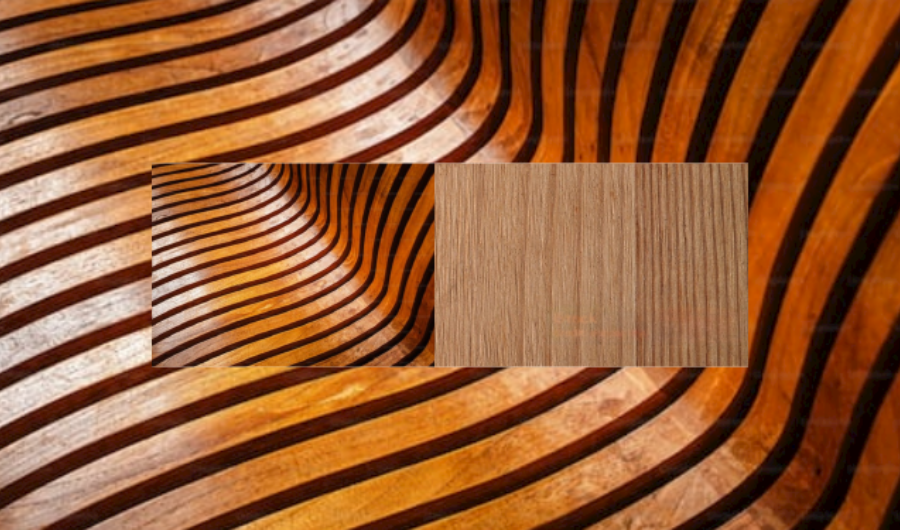Wood is one of the most versatile and commonly utilized building materials, as well as a variety of other purposes. It’s critical to grasp the fundamental difference between hardwood and softwood before starting a woodworking project or selecting the proper type of wood for a certain use. These two types of wood have different qualities that make them suited for different applications. In this article, we’ll look at the distinctions between hardwood and softwood to help you make an informed decision about the wood to use for your project.
1. What Defines Hardwood and Softwood?
The designations “hardwood” and “softwood” do not apply to the hardness or tenderness of the wood, as the titles may imply. These names depend on the scientific classification of the plants that provide the wood.
- Hardwood is obtained from deciduous trees, which have large leaves and drop them annually. These trees produce wood that is often denser and more sturdy. Hardwood trees include oak, maple, and cherry.
- Softwood, on the other hand, originates from coniferous trees that have needle-like or scale-like leaves and keep them all year. Softwood is less thick and originates from trees such as pine, cedar, and spruce.
2. Tree Origins: A Misleading Distinction
The hardwood-softwood distinction can be deceptive since it does not necessarily correspond to the hardness or softness of the wood. For example, balsa wood, which is one of the softest woods, is categorized as a hardwood. Furthermore, some softwoods, such as yew or Douglas fir, can be tougher than some hardwoods. As a result, it is essential to realize that the categorization is mostly based on the kind of tree rather than the physical properties of the wood.
3. Physical Characteristics
To really understand the distinction between hardwoods and softwoods, it is important to look at their physical properties.
Colour and Grain Pattern
Hardwood is well-known for its diverse colour palette and interesting grain patterns. For example, oak may range from pale white to deep brown, but mahogany is known for its rich reddish-brown tint. Hardwoods’ rich grain patterns frequently improve the attractiveness of furniture and ornamental objects.
Softwood, on the other hand, has a lighter tone and simpler grain pattern. Pine is often pale in colour, whereas cedar is typically reddish-brown. Softwood grain’s simplicity might be desirable in some uses, such as rustic furnishing.
Density and Hardness
Hardwood is thicker and more difficult to work with than softwood. This implies that hardwood is less prone to dent or exhibit wear and tear, making it ideal for areas with frequent traffic or surfaces that require long-term durability. Oak and maple, for instance, are popular choices for hardwood floors due to their durability.
Softwood, due to its lower density and softer nature, becomes more prone to scratching and wear as it ages. However, this property can be helpful for applications that need the wood to be readily manipulated, such as carving and detailed patterns.
Texture and Porosity
Hardwood has a more velvety, more polished feel than softwood. It is less porous than softwood, making it an excellent choice for jobs requiring a smooth surface, such as cabinets or fine carpentry.
Softwood, due to its rougher grain and higher porosity, absorbs stains and coatings more readily. This is useful when you want to get an exact look or color for a project.
4. Common Types of Hardwood
Hardwood refers to a diverse group of species of trees, each with its own set of characteristics. Here are a few instances of common hardwoods:
- Oak: Oak is well-known for its durability and strength. It has a distinctive grain pattern and is commonly used for furniture, flooring, and cabinets.
- Maple: Maple wood is highly valued for its light, consistent hue and exquisite texture. It is extensively used in the manufacture of furniture, cabinets, and cookware.
- Cherry: Cherry has a warm, reddish-brown color that darkens with age. It is frequently used in high-end furniture and cabinets.
- Mahogany: Mahogany is known for its wealthy, reddish-brown hue and straight grain. It is often utilized in luxurious furnishings and yacht construction.
5. Common Types of Softwood
Softwood also includes a variety of kinds of trees, each with its own distinct qualities. Here are some examples of common softwoods:
- Pine: Because of its low cost and ease of workability, pine is commonly utilized in building and carpentry. It has a pale tint and noticeable grain patterns.
- Cedar: Cedar is well-known for its natural insect and rot resistance. It is frequently used for exterior applications including decking and siding.
- Spruce: Pine is a flexible softwood that is used in building, musical instrument production (e.g., soundboards), and the construction of boats.
- Redwood: Redwood is valued for its appealing reddish-brown colour and innate resistance to degradation. It is frequently used in landscaping and decking.
6. Woodworking Applications
The decision between softwood and hardwood is determined by the unique needs of your project. Here’s a list of common woodworking uses for each:
Hardwood Uses:
- Furniture making: Because of its durability and appealing grain patterns, hardwood is a popular material for creating high-quality furniture.
- Cabinetry: Hardwood is perfect for cabinets in kitchens and bathrooms due to its smooth surface and ability to hold elaborate patterns.
- Flooring: Floors made of hardwood are not only long-lasting, but they also offer a sense of refinement to any room.
- Woodworking with intricate details: Carvings, mouldings, and delicate details benefit from hardwood’s hardness and smoothness.
Softwood Uses:
- Construction: Softwood’s affordability, accessibility, and workability make it the preferred material for framing, structural elements, and building projects.
- Outdoor projects: Softwood’s innate resistance to decay, as seen in cedar and redwood, makes it perfect for outdoor furniture, decks, and fences.
- Carving and whittling: The softer quality of softwood makes it easier to carve into delicate designs, making it perfect for figurines and ornamental objects.
7. Sustainability and Environmental Considerations
When it comes to environmental effects, both softwood and hardwood flooring offer advantages and disadvantages. Sustainable forestry methods are required to ensure an ethical approach to wood harvesting.
Many hardwood trees grow slowly, which makes them less sustainable. However, ethical forest management and accreditation schemes have aided in advancing the practice of sustainable hardwood harvesting. Furthermore, some hardwoods, such as cherry and walnut, are noted for growing faster than other hardwood species.
Softwoods grow at a quicker pace than hardwoods, making them more sustainable. For example, cedar and pine may be derived from well-managed forests, resulting in a low environmental effect.
Consider the source and if the material has been certified to be environmentally friendly when selecting wood for your project.
8. Cost Differences
Hardwood and softwood prices can vary greatly. Hardwood is often more expensive than pine due to its strength, density, and the length of time it takes for trees of hardwood to grow. Softwood is less expensive since it is more available and grows at a quicker rate.
Specific wood or softwood varieties can also vary in price depending on variables such as scarcity, demand, and geographical availability. Exotic hardwoods such as teak and ebony, for example, might be prohibitively expensive, but ordinary softwoods such as pine are reasonably priced.
9. Choosing the Right Wood for Your Project
A lot of things influence your choice of timber wood for your project:
- Purpose: Consider the purpose of the timber. Is it for a great piece of furnishings, a robust table, or an outside deck?
- Budget: Decide how much you’re prepared to spend on wood. Some hardwoods might be prohibitively expensive for large-scale operations.
- Aesthetics: Consider the look you wish to attain. Do you want a deep, dark wood, an illuminated and airy atmosphere, or something in the middle?
- Durability: Consider the amount of use that the wood will experience. Hardwood is a better choice for high-traffic locations, whilst softwood may be good for ornamental or seldom-used products.
- Environmental Concerns: If sustainability is essential to you, search for certified wood that adheres to responsible forestry techniques.
- Ease of Workability: If you’re new to woodworking or require wood that’s simple to cut or shape, softwood may be a better choice.
- Local Availability: Determine what types of wood are widely accessible in your area, as this might affect cost and ease.
10. Final Words
Understanding the fundamental distinctions between softwoods and hardwoods is vital for any woodworking or building job. While the terminology may be somewhat deceptive, understanding the botanical origins and exterior characteristics of various wood varieties allows you to make informed judgments depending on your project’s unique requirements.
In conclusion, hardwood is great for luxurious furnishings and interior applications due to its durability, beautiful grain patterns, and vast spectrum of hues. Softwood, on the other hand, is less expensive, simpler to work with, and more suited to outdoor tasks and building. You may confidently pick the proper sort of wood to bring any woodwork idea to life by considering the purpose of your project, financing, appearance, and other parameters.

